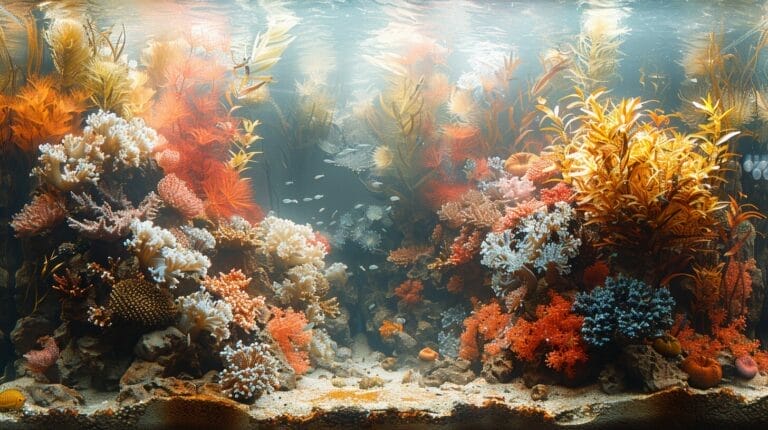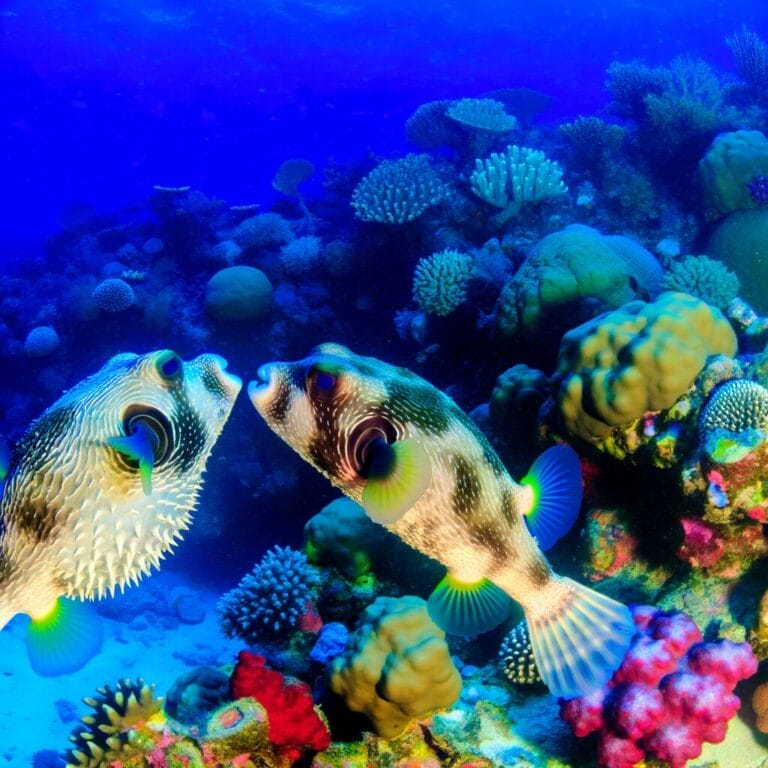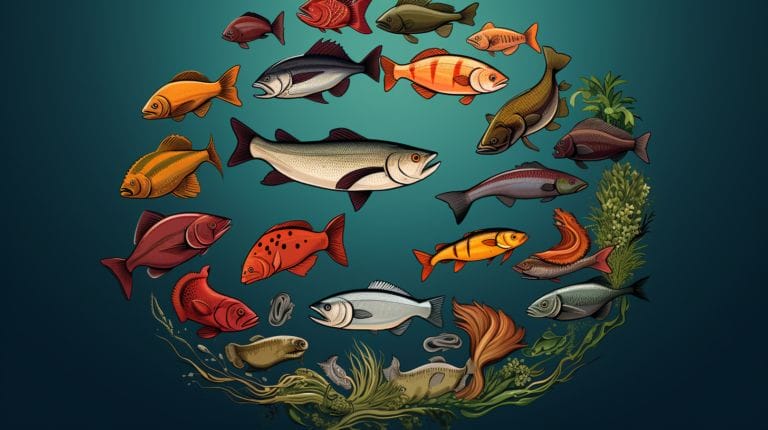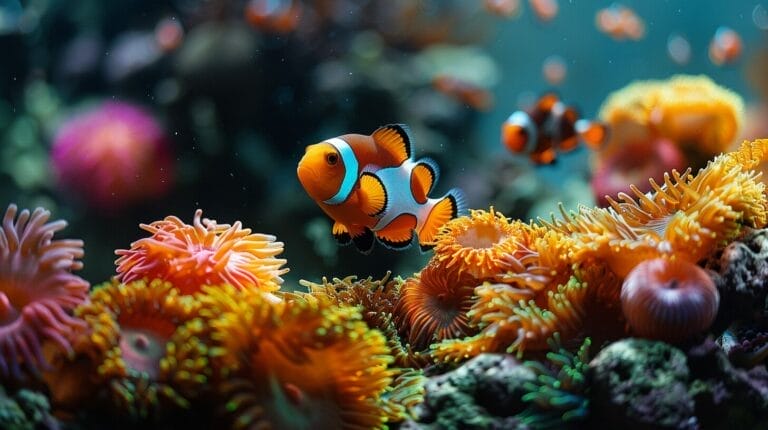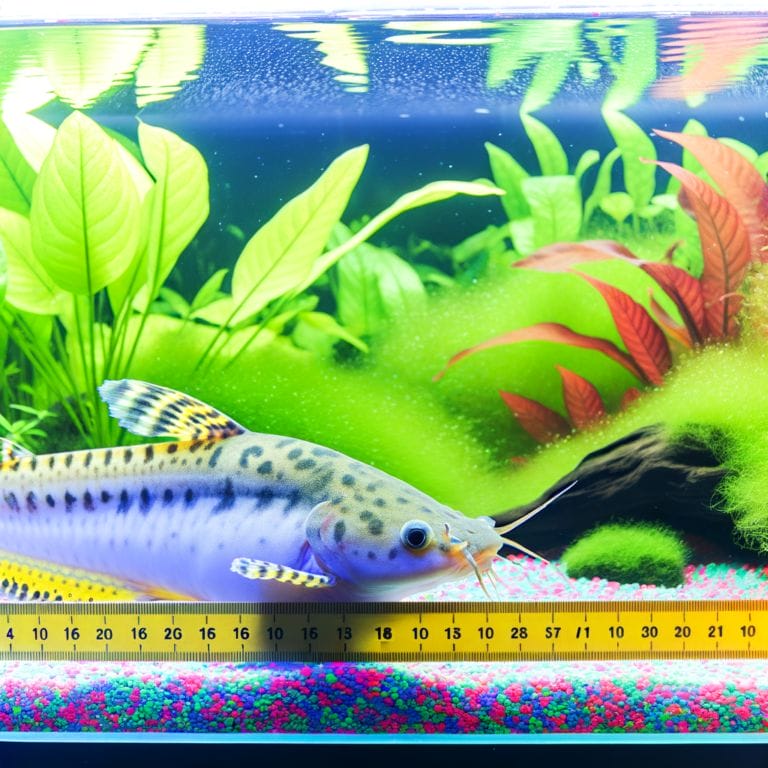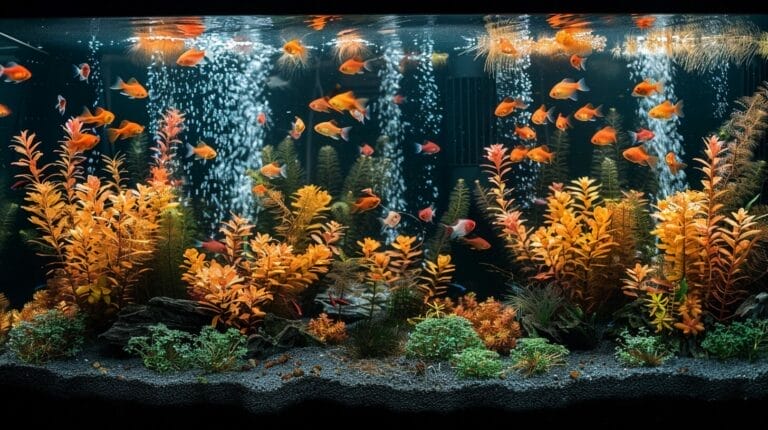Hatching Brine Shrimps: Easily Hatch Nutritious Fish Food
Interested in providing your fish with nutritious food? Curious about the process of hatching brine shrimps? Explore our guide to discover easy methods for hatching these tiny crustaceans, ensuring a healthy and varied diet for your aquatic friends.
Key Takeaways
- Use marine or aquarium salt for the saline solution.
- Maintain temperature between 25-28 degrees Celsius.
- Ensure proper aeration and circulation with an air pump.
- Hydrate and incubate brine shrimp eggs before hatching.
- Monitor the hatching process closely for success.
Understanding the Importance of Hatching Brine Shrimps as Fish Feed
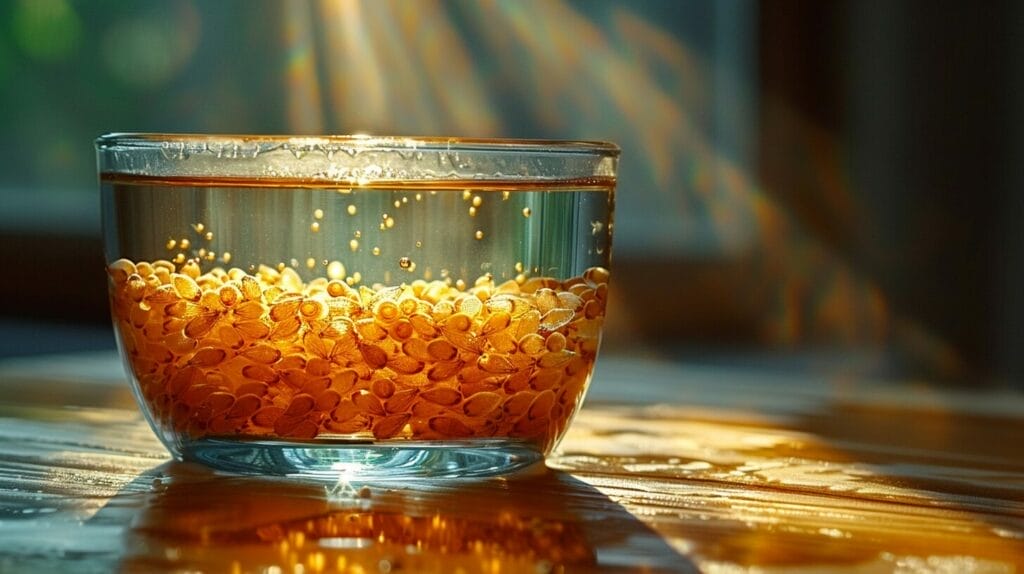
Hatching brine shrimps for fish feed provides essential nutrients and promotes ideal growth in aquatic species. When raising fish fry in an aquarium, ensuring they receive proper nutrition is important for their development.
Brine shrimp are rich in protein, fatty acids, and vitamins, making them a popular choice for feeding young fish due to their high nutritional value. By setting up a simple hatchery to cultivate brine shrimp at home, aquarists can guarantee a fresh and nutritious food source for their fish.
Whether for hobbyists or commercial aquaculture, the convenience of hatching brine shrimp at home offers a cost-effective solution while ensuring the fish receive a balanced diet. The lifecycle of brine shrimp is relatively short, allowing for a continuous production of live food for the aquarium inhabitants. This method also eliminates the need for processed fish food, providing a more natural and enriching diet for the aquatic creatures. Ultimately, hatching brine shrimp at home not only benefits the fish but also enhances the overall health and vitality of the aquarium ecosystem.
Preparing to Hatch Brine Shrimps: Essential Methods and Equipment
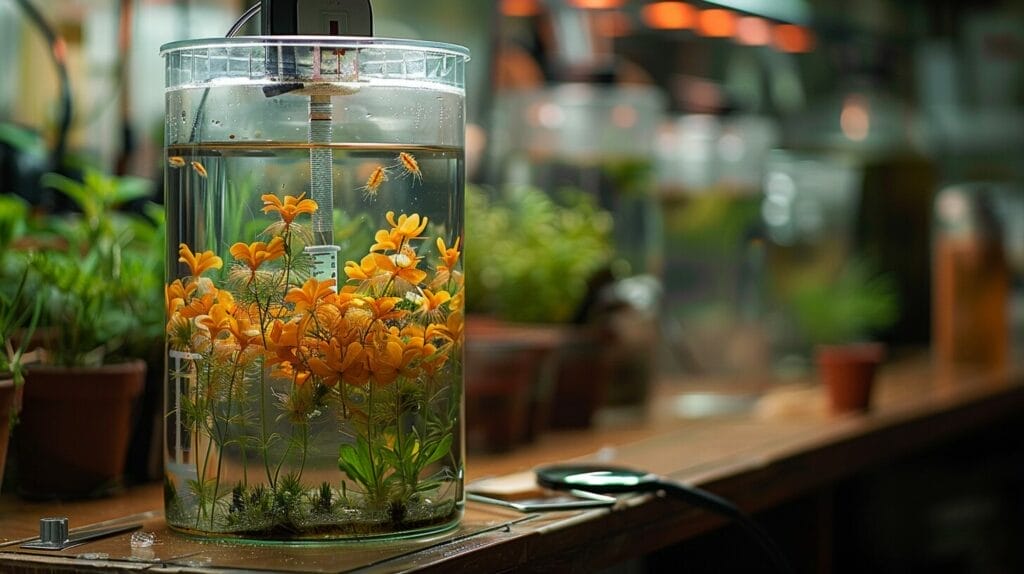
When considering the process of cultivating brine shrimp as fish feed, one of the initial steps involves selecting the appropriate, newly hatched brine shrimp eggs for hatching. To guarantee a successful hatching process, we need to gather the necessary equipment and set up the ideal environment with the correct pH and salinity for the shrimps to thrive.
Here are four essential methods and equipment to prepare for hatching brine shrimps:
- Salt: Use marine salt or aquarium salt to create a saline solution in the hatching container, mimicking the natural habitat of brine shrimp.
- Air Pump: Install an air pump to provide aeration and circulation in the hatching container, ensuring the shrimp receive enough oxygen.
- Container: Choose a suitable container like a hatching vessel or a glass jar that can hold the brine shrimp eggs and saline solution.
- Heater and Temperature: Maintain a consistent temperature between 25-28 degrees Celsius using a heater to promote the hatching process and the growth of the brine shrimp larvae.
Step-by-Step Guide to Hatching Baby Brine Shrimp

To successfully hatch baby brine shrimp, the first step involves hydrating and incubating the brine shrimp eggs.
- Begin by preparing a shrimp hatchery with saltwater and aeration.
- Add the brine shrimp eggs to the hatchery and make sure they’re fully submerged.
- Maintain the water temperature between 25-28°C for best hatching conditions.
- Monitor the hatching process by observing the eggs closely. As they hatch, you’ll notice tiny nauplii swimming in the water.
During the hatching process, challenges like poor egg quality or bacterial contamination may arise. To tackle poor egg quality, make sure you source high-quality brine shrimp eggs from reputable suppliers. In case of bacterial contamination, consider using antibiotics specifically designed for aquatic environments. Keep the hatchery clean and sterile to prevent contamination issues.
Harvesting and Storing Baby Brine Shrimp After Hatching

Once the baby brine shrimp have hatched successfully, we can proceed with harvesting and storing them for future use. Here are some key steps to take into account:
- Collection: After hatching, gently siphon the baby brine shrimp from the hatching container using a fine mesh net or air tubing to separate them from the unhatched eggs and empty shells.
- Storage: Transfer the harvested brine shrimp into a clean container with aerated saltwater. Keep the container in a cool place or refrigerate to slow down their metabolism and extend their shelf life.
- Harvesting: To harvest the brine shrimp, use a pipette or turkey baster to collect them from the storage container. Avoid disturbing the settled debris at the bottom to prevent contamination and ensure the water quality remains suitable for breeding.
- Feeding: Before feeding the brine shrimp to your fish, rinse them with fresh water to remove excess salt. Feed them to your fish within 24 hours for best nutritional value.
Can the Process of Hatching Brine Shrimps be Applied to Other Aquatic Creatures’ Reproduction?
The process of hatching brine shrimps can offer valuable blowfish reproduction insights. By observing and understanding the conditions necessary for successful hatching of brine shrimps, researchers can potentially apply similar techniques to improve the reproduction of other aquatic creatures, including blowfish. This cross-species approach could lead to important breakthroughs in aquaculture and conservation efforts.
Tips for Successful Brine Shrimp Hatching in a Commercial Setting
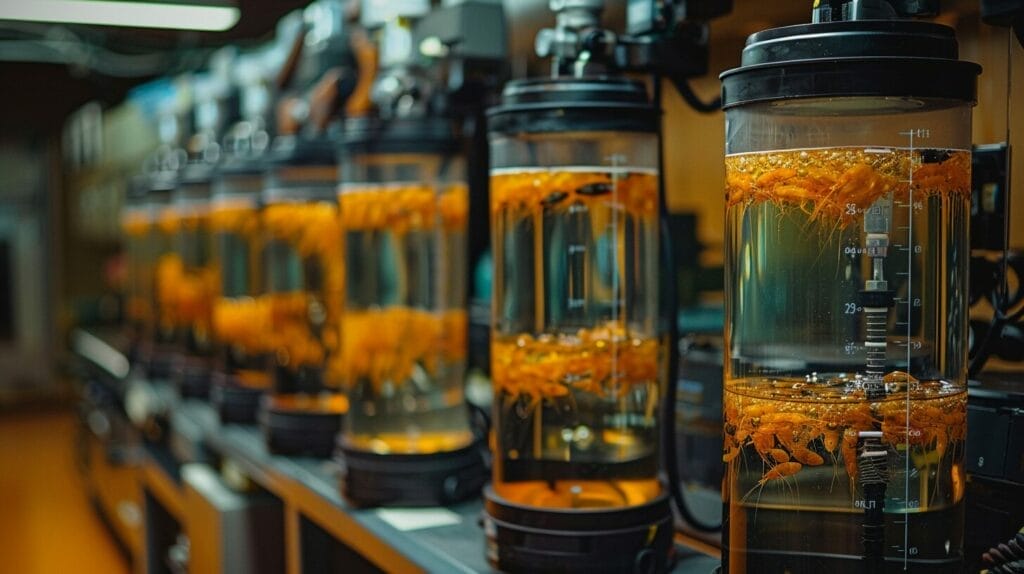
Successfully hatching brine shrimp in a commercial setting requires meticulous attention to scaling the process, maintaining quality control, and implementing cost-effective strategies. In aquaculture, it’s important to adapt hatching techniques to meet the demands of large-scale operations.
Quality control is essential to guarantee that the hatched brine shrimp meet nutritional standards for the target fish species. Regular monitoring of factors like salinity, temperature, and oxygen levels is crucial to guarantee successful hatching.
To maintain a cost-effective approach in a commercial setting, optimizing resource utilization is key. This may involve streamlining processes, reducing waste, and sourcing affordable yet high-quality brine shrimp eggs.
Investing in efficient equipment can also contribute to long-term savings by improving productivity and reducing maintenance costs. Collaboration with suppliers for bulk purchasing or negotiating favorable deals can further enhance the cost-effectiveness of the hatching operation.
Conclusion
To summarize, hatching brine shrimps is a straightforward yet efficient way to provide nourishing fish food for your aquatic pets. By adhering to the correct methods and utilizing the appropriate equipment, you can effortlessly hatch baby brine shrimp for your fish to relish.
With a little dedication and attention to detail, you can successfully incorporate hatching brine shrimps into your fish feeding routine and guarantee your fish are well-nourished and healthy.
Frequently Asked Questions
What is the process for hatching brine shrimps?
To hatch brine shrimps, follow these instructions: Collect the brine shrimp cysts and place them in a blender. Add saltwater to the cysts and connect an airline tubing to the valve. Wait for a certain period for the cysts to hatch.
Why is the aeration rate important during the hatching process?
A higher aeration rate is recommended to increase the success rate of hatching brine shrimps.
Should I add soda directly into the hatching container?
No, it is not recommended to add soda directly into the hatching container. Instead, use airline tubing to introduce the soda into the water.
How can I heat the hatching container for better results?
You can provide heat by using a rigid tubing connected to a heater. Maintain a temperature between 75-80°F for the best results.
How much saltwater should I use for hatching brine shrimps?
It is recommended to use 2-3 tablespoons of saltwater for hatching brine shrimps.


